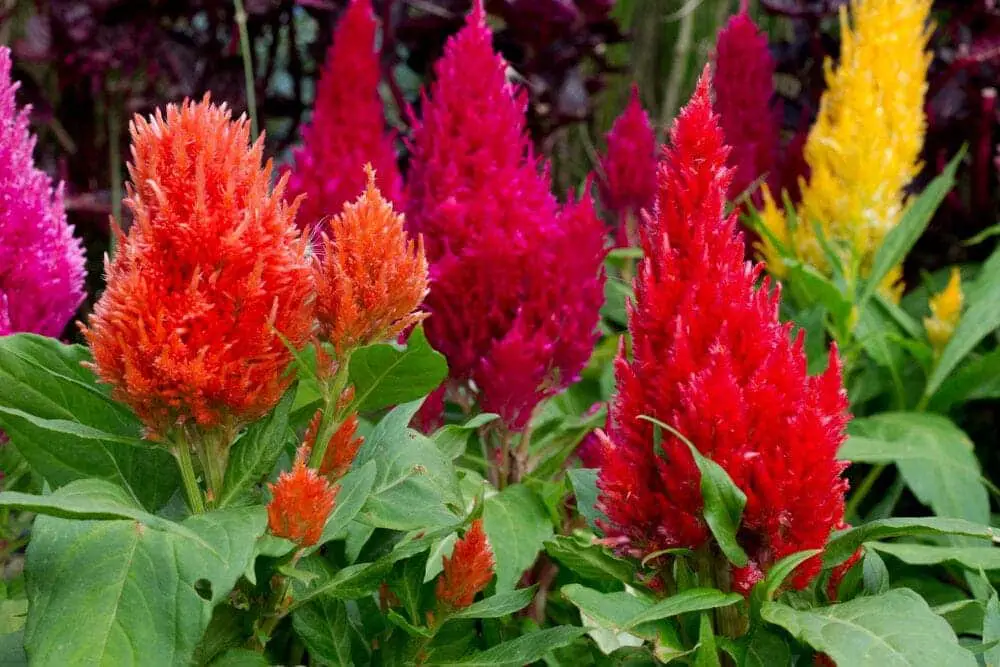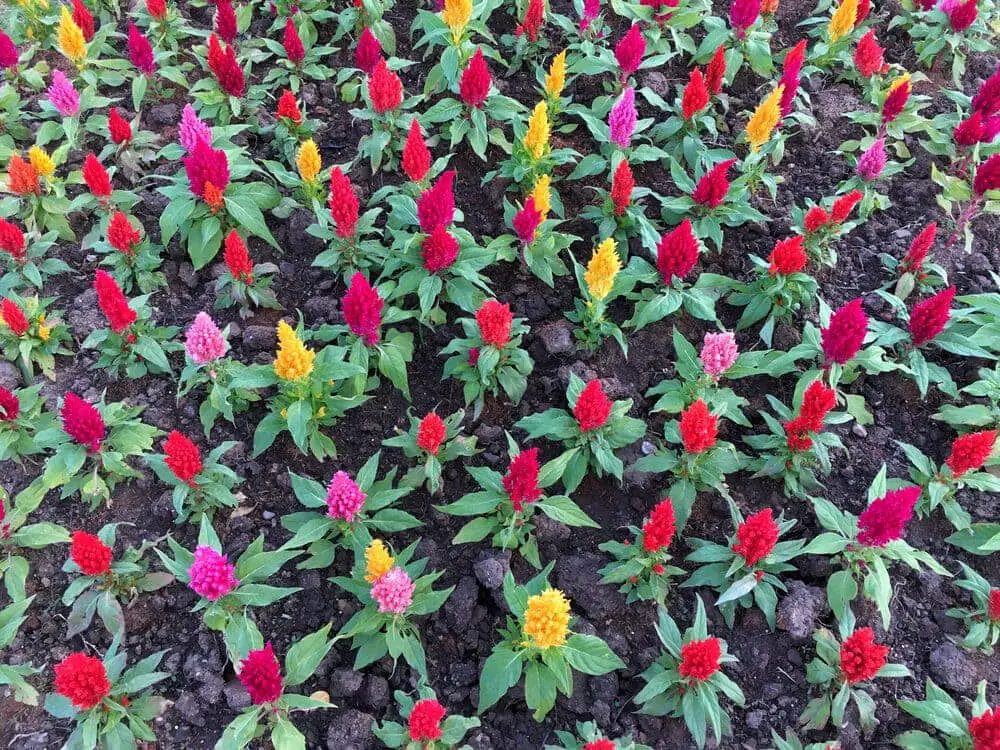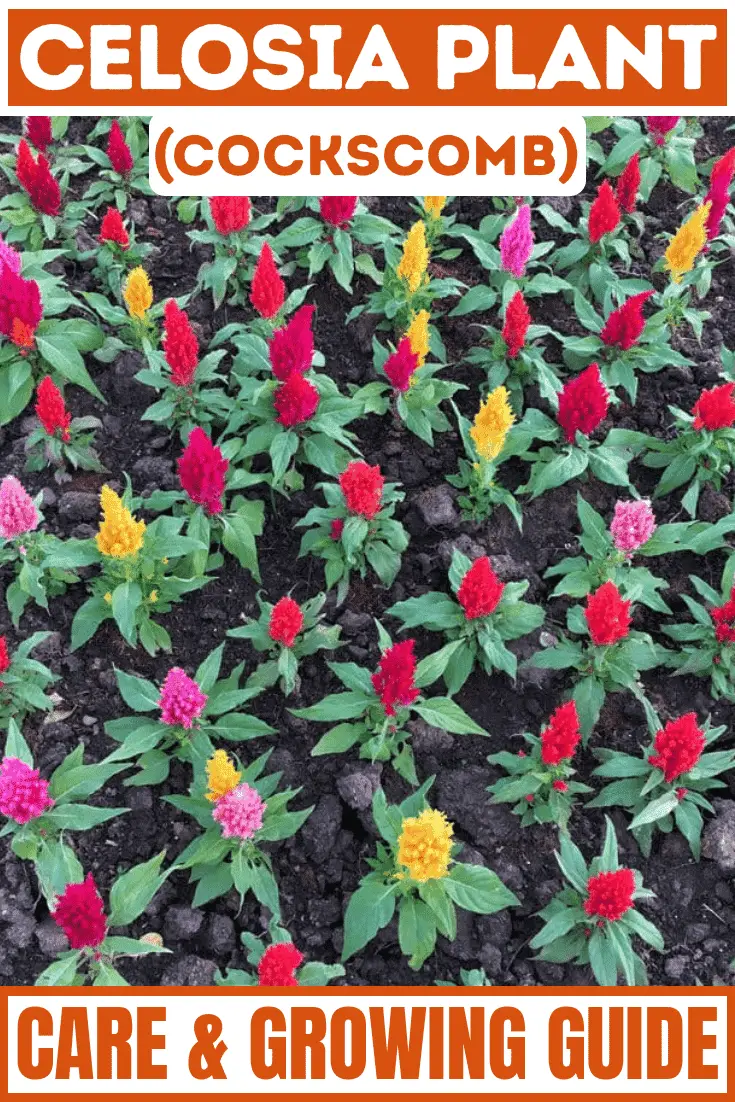Strong, tall, and colorful, the Celosia plant can steal the show in every garden that it is in.
You can use this plant as a decorative hedge or part of a garden’s design. The flower of this plant comes in red, orange, pink, and yellow, so you’ll have plenty of color variety.
Celosia Plant Care & Growing Guide
1. Light requirements
This plant loves full direct sunlight. The more light it receives, the taller it will grow. For the best results, make sure it receives 8 hours of light every day. But it can live and grow in partial shade as well, except there won’t be as many flowers and it won’t grow as tall.
2. Water
Despite how big they are, celosia plants don’t like too much water. They are prone to root rot from over-watering, so always use less water than usual. The rate at which you water these plants depends on the heat and how intense the sun is. If it rains at least one inch in a week, then you don’t have to water them. If you want to add fertilizer, it should be added to the water.
3. Climate and temperatures
The celosia loves to be in dry, warm weather. It does not like humidity or cold. If they are in hardiness zones 10 and 11, they will live as annuals. But if they’re in hardiness zone 2 through 8, they will live as perennials. They can be outdoors and in full sunlight. If the temperature drops lower than 25F, the leaves will curl over.
4. Soil
The soil must be damp but never wet or soaked. Good drainage is vital to the health of the celosia’s roots. It likes soil that is a bit acidic, from 6.0 to 6.5ph. It doesn’t require fertilizer in the soil and can grow if the soil doesn’t have very good nutrition.

5. How to transplant seedlings
About eight weeks before the last day of the frost, sow the celosia seeds into their seed trays. Two weeks before transplant, set the seedlings outside for several hours a day and bring them in at night to get them used to the weather. Five days before transplanting, stop watering the seedlings. Make sure their roots aren’t too long, and each plant has its first set of real leaves. One week before the frost ends, sow them into the ground.
6. Height and spread
This plant can grow up to 3 ft in height if it receives a lot of sunlight. Its width can also reach 18 in. If you want smaller celosia plants, plant them in partial shade. If the celosia is planted in a container, it will be considerably smaller and narrower, but it will still flower.
7. Trimming
This plant does not require much trimming, but it is good to remove large leaves or old blooms to stimulate new growth.
How to propagate the Celosia plant?
Propagating this plant is time-consuming and a bit difficult. There two ways to propagate the celosia: buy seed and by cutting. Every year when the celosia dies, it leaves seeds behind to grow in its place. The seeds must be sown and kept warm and moist.
If you’re probably getting by cutting, this is the easier option. First, the plant must be mature. Then choose a long stem with a but at the end and cut it about 6 in. The cutting should end right before the note starts for extra plant growth. Remove the lower leaves and place the cutting in a container of water. The roots will begin to grow within a week. Then bury the plant up to its top leaves in a new container with soil. Keep the soil moist.
Do they have flowers, and how do I help them bloom?
Yes, this plant is known for its large beautiful flowers that appear every summer and fall. For the best results, make sure your plant is in an area where it can get a full day of sun. Its flowers bloom all year round until the first frost, which will kill them. Since this plant is so tall, it needs to have stakes dug into the soil so it’s flower stems won’t fall over and break off.

Is the Celosia plant poisonous?
I know this plant is not poisonous. In fact, the flowers of the celosia plant can be eaten by humans. It can be cooked and added to different hot foods or washed and added to a salad. The celosia isn’t toxic to animals either, but they cannot be added to their food.
Can the Celosia plant grow in water?
No, this plant is not suited to grow in water. It doesn’t like moist soil and quickly experiences root rot.
Common Plant Diseases and pests
Aphids dine on the leaves and stems of most plants, and the Celosia is no different. You need to watch out for aphid infestations, especially if your plant is a houseplant. Their numbers increase quickly, so you have to fight them off as soon as you see them. First, rinse the aphids off with a hose. Wash the entire plant and make sure they fall on the ground. Then, apply a gentle insecticide to your plants, like neem oil or even dish soap mixed in water.
Slugs are the enemy of every gardener. They can attack the celosia and rip hole into its stems and leaves. You can see that slugs are infesting your plants by looking for slime trails. To fight off slugs, you are going to have to find and catch them by hand. Salting your soil is not a good idea. Sprinkle wood ash or and ground-up eggshells to keep slugs away.
Also read: Dwarf Ixora: Plant Care & Growing Guide
Conclusion
- The celosia plant originates from India.
- Do not overwater this plant. It likes to be a bit dry between each watering.
- For the flowers to bloom, make sure the Celosia receives eight or more hours of direct sunlight a day.
- Celosia is prone to root rot.
- Its flowers bloom in the summer and fall.
- It can grow in nutrient-poor soil.
- It does not like humidity.
- Cold temperatures will cause the celosia to go dormant.
- Place a stake near the plant to provide support to the tall flower stem.

Victoria is the owner and main author of hobby plants. She loves spending her free time in her garden planting and taking care of her plants. Victoria hopes you enjoy the content here!